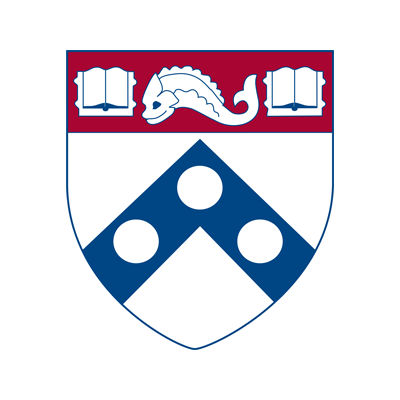预约演示
更新于:2025-05-07
NS4B
更新于:2025-05-07
基本信息
别名- |
简介- |
关联
15
项与 NS4B 相关的药物作用机制 HCV NS4A抑制剂 [+3] |
在研适应症 |
非在研适应症 |
最高研发阶段临床2期 |
首次获批国家/地区- |
首次获批日期1800-01-20 |
作用机制 NS4B抑制剂 [+1] |
原研机构 |
在研适应症 |
非在研适应症- |
最高研发阶段临床2期 |
首次获批国家/地区- |
首次获批日期1800-01-20 |
14
项与 NS4B 相关的临床试验NCT06006559
A Randomized, Participant- and Investigator-blinded, Placebo-controlled, Parallel Group Study to Assess the Efficacy, Safety and Pharmacokinetics of EYU688 in Patients With Dengue Fever
The purpose of this study is to characterize the effect on dengue viral load, fever clearance time as well as on clinical signs and symptoms with the treatment of EYU688 compared with placebo in patients with dengue fever.
开始日期2024-02-20 |
CTRI/2024/01/061272
A randomized, participant- and investigator-blinded, placebo-controlled, parallel group study to assess the efficacy, safety and pharmacokinetics of EYU688 in patients with dengue fever - NIL
开始日期2024-02-15 |
申办/合作机构 |
NCT05201794
A Phase 2, Randomized, Double-blind, Placebo-controlled, Double-dummy, Multicenter Trial Assessing the Efficacy and Safety of Two Dose Regimens of JNJ-64281802 for the Prevention of Dengue Infection
The purpose of this study is to evaluate the prophylactic effect of JNJ-64281802 with respect to the prevention of laboratory-confirmed dengue virus (DENV) infection up to the last day of dosing among participants who have no evidence of current DENV infection at baseline.
开始日期2023-02-22 |
100 项与 NS4B 相关的临床结果
登录后查看更多信息
100 项与 NS4B 相关的转化医学
登录后查看更多信息
0 项与 NS4B 相关的专利(医药)
登录后查看更多信息
691
项与 NS4B 相关的文献(医药)2025-06-01·Journal of Structural Biology
Dengue virus-host interactions: Structural and mechanistic insights for future therapeutic strategies
Article
作者: Ghosh, Nilanjan ; Khanra, Moumita ; Khatun, Samima ; Ghosh, Indrani ; Gayen, Shovanlal
2025-04-01·Proceedings of the National Academy of Sciences
Mechanistic insights into dengue virus inhibition by a clinical trial compound NITD-688
Article
作者: Palmer, Lee K. ; Moquin, Stephanie A. ; Wang, Yu-Hsiu ; Wang, Yan ; Franklin, Samuel J. ; Sun, Long ; Yeung, Jason ; Russell, William K. ; Skepper, Colin ; Xie, Xuping ; Hu, Yanping ; Zou, Jing ; Fernandes, Luciana ; Barriga, Daniela ; Shi, Pei-Yong
2025-03-01·Reviews in Medical Virology
Dengue Virus Life Cycle and Host Protein Interactions: Focus on RNA Binding Proteins and Therapeutic Advances
Review
作者: Afroj, Shariya ; Roy, Riya ; Y.S, Ravi Kumar ; Verma, Bhupendra ; Sokhal, Preeti ; Singh, Kinjal ; Phadnis, Sushant ; Singh, Anjali
12
项与 NS4B 相关的新闻(医药)2025-02-11
关注并星标CPHI制药在线
近日,东阳光药业1类创新药磷酸萘坦司韦胶囊获NMPA批准上市,用于与艾考磷布韦片联用,治疗初治或干扰素经治的基因1、2、3、6型成人慢性丙型肝炎病毒(HCV)感染,可合并或不合并代偿性肝硬化。
磷酸萘坦司韦是一款NS5A抑制剂,艾考磷布韦是一款NS5B抑制剂,两款药均为东阳光药自主研发的1类新药。该联合疗法治疗慢性丙肝的2期临床研究显示,该方案在基因1型、2型、3型和6型受试者中SVR12(治疗结束后12周时实现持续病毒学应答的受试者百分比)分别为96.2%、100.0%、83.3%、100.0%。代偿期肝硬化和无肝硬化受试者总体SVR12分别为100%和96.2%。全分析集分析结果显示总体SVR12为96.7%。
以此出发,我们回顾一下丙肝药物开发的重要时刻。
干扰素治疗丙肝的困境
HCV于1989年被发现,是一种常见的血源性病原体,主要感染部位是肝脏,一经感染,如果不采取进一步治疗,HCV可能引发急性或慢性肝炎,并增加感染者发展为肝硬化、肝功能衰竭和肝癌的风险。HCV共存在6种基因型(1-6),丙肝患者以基因1型居多,占大约70%。
2020年,三位科学家因发现了HCV获得诺贝尔生理学或医学奖。当年诺奖颁发时,已经有了很多治疗HCV的药物。而在此之前,丙肝的治疗主要采用聚乙二醇干扰素(一种具有抗病毒、抗肿瘤和免疫调节特性的多效性细胞因子)联合利巴韦林(一种广谱抗病毒药物)。
其方案为连续在24至48周内注射聚乙二醇干扰素和服用利巴韦林,但这种疗法不仅费用昂贵且毒副作用强,例如干扰素会引起流感样症状,利巴韦林则可能引起溶血性贫血。在许多情况下,严重的副作用导致患者停止治疗。
在疗效方面,根据《丙型肝炎防治指南》,“干扰素+利巴韦林”治愈率大概只有54%-82%,且治愈者有不小的几率会复发。
20世纪末,随着HCV体外培养难题被攻克,新的机会出现了。科学家们终于有了能用来筛选丙肝药物的工具,这为开发直接抗病毒药物(DAAs)奠定了基础。
NS3/4A蛋白酶抑制剂
宣布HCV治疗进入DAA时代
研究发现,HCV是一条单链正义RNA病毒,基因组包含10个基因,编码膜蛋白E1和E2,核心蛋白、p7以及非结构蛋白NS2、NS3、NS4A、NS4B、NS5A和NS5B。其中NS3/4A、NS5A、NS5B是HCV复制过程中三个重要的作用靶点
DAAs的作用靶点(图片来源:参考来源2)
针对这三个靶点,科学家们研发了HCV特异的直接抗病毒药物:NS3/4A 蛋白酶抑制剂、NS5A 抑制剂及NS5B 聚合酶抑制剂。
NS3/4A蛋白酶抑制剂是最早上市的丙肝特异的DAA。NS3/4A复合体主要催化丙肝病毒非结构蛋白水解成熟,是丙肝病毒生活周期所必须的。
2011年,第一个NS3/4A蛋白酶抑制剂Boceprevir(波西普韦)获FDA批准上市,用于与聚乙二醇干扰素和利巴韦林联合治疗HCV患者,该药由默沙东开发。后续分别上市了Vertex/强生的Incivek(特拉瑞韦,已退市)、强生的Olysio(西美瑞韦,Simeprevir),以及BMS在日本上市的Sunvepra(asunaprevir)。
NS3/4A蛋白酶抑制剂的出现,使“干扰素注射+利巴韦林+DAA”成为丙肝临床标准治疗方案,并将临床治愈率从40%提高到了80%以上。
NS5B 聚合酶抑制剂
使口服治愈丙肝成为可能
NS5B是HCV的RNA聚合酶,抑制它将会直接抑制RNA合成,从而终止病毒复制。而且在不同基因型的HCV中,NS5B 聚合酶均高度保守,且抑制它不会产生宿主毒性,因此,NS5B成为一个理想的抗HCV病毒靶点。
尽管从蛋白编号上来看,NS5B似乎是在NS5A之后。但是从成药速度而言,NS5B抑制剂却早于NS5A抑制剂出现。
2013年,吉利德的小分子药NS5B抑制剂索非布韦(sofosbuvir)获FDA批准上市。索非布韦最初由Pharmasset公司开发,后该公司被吉利德收购,索非布韦被成功纳入麾下。索非布韦对多个基因型HCV感染均疗效惊人,直接把疾病治愈率提高到近乎100%,而且索非布韦是首个获批可用于慢性丙型肝炎全口服治疗方案的药物,在用于特定基因型慢丙肝治疗时,可消除对干扰素的需求。
2014年,索非布韦上市的第一年,销售收入就达102.83亿美元,创下新药上市首年销售突破100亿美元的记录。
市场上另外两种NS5B抑制剂分别是艾伯维的达拉他韦(Viekira Pak,2014年)和BMS的贝卡布韦(Ximency,2016年,仅在日本获批),它们都是复方药物的成分。
NS5A 抑制剂,复合DAA方案中的骨干
与HCV基因组中的许多其他蛋白质不同,NS5A (非结构蛋白5A)实际上没有酶的活性,但它却是HCV RNA复制和病毒粒子组装所必需的,被称为HCV生命周期的主调节器。
2014年,BMS的达卡他韦(Daclatasvir)在日本获批上市,用于治疗基因1型慢丙肝、丙肝代偿性肝硬化和病毒血症。达卡他韦通过结合NS5A蛋白N末端二聚体,抑制NS5A从而抑制HCV复制。达卡他韦上市后,多个NS5A抑制剂陆续推出。
在慢丙肝治疗中,由于单一靶点药物不足以满足全口服、短疗程、多基因型有效、高治愈率的要求,因此一般采用DAA联合治疗方案。目前所有多靶点组合DAA方案中,都含有NS5A抑制剂作为骨干。与之配伍的可以是一个NS3/4A蛋白酶抑制剂(如elbasvir/grazoprevir)、一个NS5B聚合酶抑制剂(如sofosbuvir/ledipasvir)或者两种均有(如sofosbuvir/velpatasvir/voxilaprevir)。这些方案都达到了95%甚至更高的治愈率。
自HCV被发现以来,政府机构以及制药行业均投入大量资源,发现了许多有效的抗丙肝药物。现在可以通过持续病毒学应答(SVR)来实现治愈。由于丙肝的高治愈率,用药患者人数在大幅减少,在患者群体日益萎缩的情况下,丙肝药物市场正在大幅缩水。该赛道相关玩家,早已开始转型。
参考来源:
1.https://www.nmpa.gov.cn/zhuanti/cxylqx/cxypxx/20250208172031130.html.
2.Palese P. Profile of Charles M. Rice, Ralf F. W. Bartenschlager, and Michael J. Sofia, 2016 Lasker-DeBakey Clinical Medical Research Awardees. Proc Natl Acad Sci U S A. 2016 Dec 6;113(49):13934-13937. doi: 10.1073/pnas.1616592113. Epub 2016 Nov 18. PMID: 27864510; PMCID: PMC5150379.
3.Tiffany Benzine, Ryan Brandt, William C. Lovell et al. NS5A inhibitors unmask differences in functional replicase complex half-life between different hepatitis C virus strains. PLoS Pathogens, Published: June 8, 2017, doi:10.1371/journal.ppat.1006343.
扫码领取CPHI & PMEC China 2025展会门票
【智药研习社近期直播】
来源:CPHI制药在线
声明:本文仅代表作者观点,并不代表制药在线立场。本网站内容仅出于传递更多信息之目的。如需转载,请务必注明文章来源和作者。
投稿邮箱:Kelly.Xiao@imsinoexpo.com
▼更多制药资讯,请关注CPHI制药在线▼
点击阅读原文,进入智药研习社~
上市批准申请上市
2024-12-01
引 言
登革疫苗的研发已经有百年的历史,即使已经有两款上市疫苗,其使用范围和作用效果仍然存在局限性。考虑到登革病毒目前的流行状况,我们仍期待受众广泛、高效持久、均衡免疫的登革疫苗的研发和问世。
01
蚊虫肆虐热带狂,
登革发病急上升
登革热是登革病毒感染所致的急性病毒性传染病,主要通过伊蚊叮咬传播。近三十年来,登革热暴发和流行日益频繁,全球超过100多个热带和亚热带国家均有病例报道。据世界卫生组织(WHO)估计,全球每年约四亿人感染,其中50万人发展为重症,死亡近两万人。2019年登革热被WHO列为“全球十大健康威胁”。
2023年以来,东南亚和南美的登革疫情持续高发。根据巴西卫生部数据,截至2024年3月,已有超过150万例疑似病例和500多例死亡病例,是2023年同期的四倍,预计2024全年将有超过400万例病例,创历史新高。
我国同样面临登革热的严重威胁,历史上曾暴发过波及百万人口的重大疫情。近年来,主要以境外输入引发本地传播为主,广东、云南等地是主要流行区。如2014年的广东疫情,发病人数超过五万。2023年全年报告近2万例。目前,登革热被国家卫健委列为法定报告的乙类传染病。
因此,我们需保持高度警惕,做好科学有序的疫情防范工作
【自2023年4月以来报告登革热病例
的国家/地区(截至24年5月)】
(红色越深,代表感染人数越多)
https://www.ecdc.europa.eu/en/publications-data/countriesterritories-reporting-dengue-cases-april-2023-and-may-2024
02
登革热因登革毒 ,
单是血清有四种
登革病毒是登革热的病原体,属于黄病毒科正黄病毒属,基因组为单股正链RNA,大小约为11 kb,含一个开放读码框,依次编码3个结构蛋白(C、prM和E)和7个非结构蛋白(NS1、NS2A、NS2b、NS3、NS4a、NS4b和NS5)。
自然界存在四种血清型的登革病毒(1,2,3和4型),感染任何一种血清型均可导致疾病发生。不同型别登革病毒之间缺乏交叉保护,多次感染或同时感染不同血清型登革病毒的病例亦有报道。
登革病毒感染所致的临床表现复杂多样,多数为无症状感染。患者基于临床表现可分为登革热和重症登革,前者一般表现为高热、头痛、关节痛、皮疹等感冒样症状,为自限性疾病;后者可发展为出血、肝损害、休克等,病情危重,甚至威胁患者生命,如救治不及时病死率可达30%。
遗憾的是,目前临床上尚无特异药物治疗登革,主要采取对症治疗和支持疗法,抗病毒药物的研发尤为重要。最近,比利时杨森制药公司研发的抗病毒药物JNJ-1802已进入了临床II期,是目前进展最快的抗病毒小分子药物。登革病毒的单克隆抗体VIS513近期也完成了临床I期试验。
【登革病毒感染所致临床症状】
https://www.cdc.gov/dengue/Symptoms/index.html
03
减毒活疫苗已上市,
更好的疫苗在路上
疫苗接种是消灭或控制传染病的最有效手段。登革疫苗的研发已有将近百年的历史,包括灭活疫苗、减毒疫苗、重组蛋白疫苗、减毒活疫苗等先后应用于登革疫苗的研发。目前,已有两种登革四价减毒活疫苗在海外获批上市,还有一种已完成临床III期试验,而亚单位疫苗、DNA疫苗以及mRNA疫苗等仍处于临床前或临床研究不同阶段(表)。
左右滑动查看更多
【目前登革疫苗的研发现状】
登革四价减毒活疫苗Dengvaxia(CYD-TDV)由法国赛诺菲巴斯德公司研制,是全球第一个上市的登革疫苗。目前,墨西哥、菲律宾和美国等国先后批准了该疫苗,用于年龄9-45岁(具体年龄限制取决于各国的监管批准)、有登革病毒既往感染史的人群。Dengvaxia采用三针免疫,每针间隔6个月。Dengvaxia在东南亚和拉丁美洲国家的整体保护效力分别达56.7%和60.8%。然而,Dengvaxia在特定人群中可能增加罹患登革热住院风险。
Qdenga(TAK-003)疫苗是第二个获批上市的登革四价减毒活疫苗,由日本武田制药公司生产,于2020年12月获得欧盟委员会批准,并在印度尼西亚、巴西、阿根廷、英国和德国等国家获得许可。Qdenga采用两剂免疫,间隔3个月。Qdenga具有良好的保护效力和耐受性,在第54个月随访时的整体保护效力达61.2%,且尚无疫苗接受者疾病加重的报道。然而,在登革血清阴性人群中,Qdenga对DENV3的保护效力并不明显,还可能导致更高的住院率。
另一种四价减毒活疫苗TV003(DENV2/4Δ30)疫苗也完成了III期临床试验,该疫苗由美国国家过敏和传染病研究所、巴西布坦坦公司和美国默克公司共同开发。TV003采用单剂免疫,对接种前有无登革热暴露史的2-59岁受试者均耐受性良好,在第24个月随访时的整体免疫效力大于80%,对有登革热暴露史的受试者也能达74%。单剂免疫可降低接种成本,满足去流行区的旅行者或需快速保护的人群。然而,TV003对于2-6岁受试者的长期保护效果,以及接种后是否会出现突破感染等仍需进一步评估。
【登革四价减毒活疫苗的构建示意图】
(A)Dengvaxia(B)TAK-003(C)TV003
DOI: 10.1016/j.biopha.2021.112304
我国尚未批准任何登革疫苗,也没有任何品种进入临床研究阶段,多数品种研发均处于临床前研究阶段。例如,我国学者采用与Dengvaxia类似的策略,以乙脑减毒活疫苗SA14-14-2为骨架,成功构建了乙脑/登革嵌合减毒疫苗,单剂免疫小鼠及恒河猴即可诱导高效的免疫应答,对病毒攻击具有完全的保护作用,是国内唯一完成恒河猴保护实验的候选疫苗。首都医科大学安静团队开发了登革四价DNA疫苗,可在小鼠体内诱导出长效且均衡的保护作用。
04
国产疫苗亟待突破,
集智公关是关键
两种登革四价减毒活疫苗Dengvaxia与Qdenga的上市给人类应对登革带来了希望,但其临床应用和作用仍十分有限。Dengvaxia仅适用于9-45岁曾感染过登革病毒的人群。而Qdenga则只被WHO建议纳入疾病高负担地区6-16岁人群的常规免疫规划。
考虑到登革的流行现状,理想的登革疫苗应安全、有效且可负担。未来,一方面要加强基础和转化研究,揭示登革病毒感染、传播和免疫激活的作用机制,阐明重症登革发病和转归的分子机制;同时,加强mRNA疫苗等创新技术的应用,推动动物模型、临床队列等平台资源建设,完善登革疫苗审评、监管和上市后评估体系;此外,作为被忽视的热带传染病,各国政府、国际组织和工业界的长期稳定的投入尤为关键。
理想的登革疫苗示意图
让我们携手并进,向着全球消除登革热的目标不断前行!
供稿人简介
邓永强研究员
邓永强,军事科学院军事医学研究院微生物流行病研究所研究员,博士生导师。主要从事新突发病毒感染和致病机制研究,先后承担国家和军队课题10余项。以第一/通讯作者(含并列)在Cell、Nature和Science等国际知名杂志发表SCI论文40余篇。先后授权发明专利共6项,参编专著3部。先后获军队科技进步奖一等奖和二等奖、北京市自然科学一等奖和广州市科学技术进步一等奖各1项。
识别微信二维码,添加生物制品圈小编,符合条件者即可加入
生物制品微信群!
请注明:姓名+研究方向!
版
权
声
明
本公众号所有转载文章系出于传递更多信息之目的,且明确注明来源和作者,不希望被转载的媒体或个人可与我们联系(cbplib@163.com),我们将立即进行删除处理。所有文章仅代表作者观点,不代表本站立场。
疫苗临床2期
2024-10-29
摘要:登革热病毒(DENV)通过感染的伊蚊传播给人类,引起的疾病从轻微的登革热到致命的登革休克综合征不等。不同DENV血清型或不同黄病毒之间相似保守的结构和序列导致了交叉反应的发生,随后是抗体依赖性增强(ADE)。迄今为止,能够提供针对不同DENV血清型感染的有效保护的疫苗仍然是最大的挑战。因此,深入研究对于开发有效和有效的治疗药物至关重要。此外,黄病毒的交叉反应性导致临床环境中的误诊,可能会导致适当干预管理的延迟。因此,迫切需要具有高特异性和敏感性的准确诊断,以便及时诊断并为DENV感染的个体提供早期治疗。在这篇综述中,将讨论DENV感染治疗平台中中和抗体、抗病毒药物和疫苗候选物的最新发展。此外,还将介绍抗原隐蔽表位的发现、分子模拟原理以及单链或单域抗体在DENV应用方面的进展。
1.引言
登革热病毒感染是热带和亚热带地区最常见的蚊媒传播疾病之一,全球每年约有1亿至4亿感染病例。目前,DENV感染在非洲、东地中海、美洲、东南亚和西太平洋等国家流行。全球登革热流行的分布表明,登革热感染的爆发正在全球范围内发生(图1)。根据最近的WHO报告,2020年感染病例的增加使得DENV成为COVID-19之后最严重的病毒性疾病。在这些国家中,菲律宾、越南、印度、哥伦比亚和巴西报告了最多的DENV感染病例。导致蚊子传播疾病在全球传播的主要因素之一是快速的城市化和不适当的基础设施规划,这可能导致无效的病媒控制管理。此外,商务团队或个人旅行也促进了这些蚊子传播疾病在他们从一个地方到另一个地方旅行时传播到新环境中。2013年,在马来西亚沙捞越发现了一种新发现的DENV血清型。最初,这起DENV病例被认为是DENV4的森林登革热感染,涉及蚊子Aedes nivalis和非人类灵长类动物之间的传播。经过一系列遗传验证过程,它被确定为新的DENV5血清型,主要发生在东南亚的森林中。尽管DENV5的实际传播途径仍不清楚,但可能导致其出现的因素可能是由于森林株到人类株的遗传变化、DENV的高变异频率和大规模的森林砍伐。这种新的DENV5血清型与另外4种现有血清型在系统发育上有明显的不同,表明DENV的新出现正在进行中,预示着可能会有更多的病毒出现,这可能是由于气候和生态系统的变化导致的动物源性传播。到目前为止,针对DENV感染的特定治疗药物或疫苗仍然不可用。原因之一是DENV和其他黄病毒之间通常发生的交叉反应,因为黄病毒在包膜蛋白(E)上呈现的相似保守结构。如前所述,DENV E蛋白与ZIKV E蛋白的同源性高达50%,因此,在第二次感染任何黄病毒科成员时,由于免疫系统产生的交叉反应性抗体的特异性和数量,会发生交叉反应随后是ADE。此外,不同黄病毒如寨卡病毒(ZIKV)和基孔肯雅病毒(CHIKV)或不同DENV血清型的共感染总是呈现类似的起始症状,因此可能导致临床诊断管理的复杂化。为了解决这个问题,准确且快速的诊断工具对于早期药物治疗至关重要。在这篇综述中,将重点讨论DENV感染问题,如由于不同血清型DENV感染和不同黄病毒感染导致的交叉反应、ADE、免疫逃避和商业诊断试剂盒的限制。此外,将回顾和介绍不同的诊断和治疗方法的最新进展,以建议可能解决交叉反应问题的方法。事实上,潜在的治疗剂和诊断标记的发现永远不会结束,直到产生特定的、敏感的诊断标记和疫苗或治疗剂,它们在治疗DENV感染方面既敏感又有效。
图1. 2020年和2021年全球登革热疫情。受影响的国家包括孟加拉国、菲律宾、越南、印度、马尔代夫、印度尼西亚、新加坡、哥伦比亚、巴拉圭、秘鲁、肯尼亚、斐济、库克群岛、留尼汪岛、斯里兰卡、泰国、苏丹、毛里塔尼亚、东帝汶、也门、尼泊尔、马约特岛、厄瓜多尔和巴西。
1.1.登革热病毒基因组和结构
DENV是来自黄病毒科的黄病毒属。通常,如登革热休克综合征(DSS)和登革热出血热(DHF)等严重症状可能由四种抗原性不同的DENV血清型(DENV-1、DENV-2、DENV-3、DENV-4)中的任何一种连续感染引起。DENV是一种小的二十面体包膜病毒,由11 kb的正单链RNA组成,其成熟的包膜结构称为病毒粒子,包含三种结构蛋白,包括衣壳(C)、包膜(E)和膜(M),以及七种非结构(NS)蛋白,如NS1、NS2A、NS2B、NS3、NS4A、NS4B和NS5(图2)。结构蛋白主要参与病毒组装。例如,C蛋白与RNA相互作用以组装核衣壳。成熟病毒粒子的形成需要M蛋白的帮助,M蛋白在识别不同黄病毒感染的不同类型免疫反应中很重要。它也是DENV的主要组成部分,作为表面蛋白,协助病毒附着和融合在宿主细胞膜上。除此之外,M蛋白可以通过寡聚化形成结构病毒粒子。另一方面,非结构蛋白和细胞蛋白对于病毒基因组的复制、翻译、封装和病毒蛋白的正确折叠至关重要,所有这些都发生在与粗面内质网相关的细胞质中。
图2. DENV基因组和NS1蛋白结构域图。病毒基因组经过翻译产生单一多聚蛋白。多聚蛋白处理后,通过蛋白水解裂解产生病毒蛋白。对于NS1,涉及DENV病理学的三个结构域包括β-卷、翼状结构域和β-梯。
1.2.登革热病毒的生命周期
人类通常通过感染的蚊子如埃及伊蚊或白纹伊蚊感染登革热病毒(DENV)。DENV在感染的第一天就会针对树突状细胞(DCs)和巨噬细胞。从其他综述中总结,DENV生命周期包括病毒进入和附着、病毒和内体膜融合、核衣壳释放、蛋白合成和处理、RNA复制、核衣壳形成、病毒组装、病毒成熟,最后是成熟DENV粒子的释放。对于宿主细胞附着,DENV E蛋白将与目标细胞的细胞因子如树突状细胞特异性细胞间粘附分子-3抓取非整合素(DC-SIGN)、甘露糖受体、硫酸肝素等相互作用。接下来,DENV通过网格蛋白介导的内吞作用进入目标细胞,内体隔室内的低pH值允许DENV与内体膜融合。在酸性内体环境的帮助下,RNA基因组从解包的核衣壳释放到细胞质中进行蛋白处理和复制。最初,RNA基因组作为mRNA并进行翻译以产生病毒蛋白。RNA基因组的复制发生在病毒诱导的细胞内膜上,称为复制复合体,由病毒RNA、病毒蛋白和宿主细胞因子组成。这个复合体在内质网(ER)膜上形成,也有助于保护复制产物免受宿主先天免疫系统的识别。核衣壳形成后,DENV粒子开始组装,当它进入ER腔时形成未成熟的DENV粒子。在跨高尔基体网络(TGN)的分泌途径中,DENV的成熟需要通过类胰蛋白酶样丝氨酸蛋白酶的作用将前膜/膜(prM/M)切割成M蛋白,以释放成熟和传染性的DENV。为了避免过早的DENV膜在病毒粒子从感染细胞释放之前与宿主细胞融合,pr将继续与E二聚体结合,包裹疏水融合环。最后,成熟的DENV一旦释放到细胞外空间,pr最终会从病毒粒子表面脱离。
1.3.临床表现
登革热感染包括发热期、危重期和恢复期。发热期通常持续一周,症状包括高热、流感样症状、头痛、呕吐和关节痛。危重期也称为生命威胁期,会出现血浆渗漏和内出血等更严重的症状。在恢复期,随着血管通透性的恢复,症状会减轻。DENV感染可以引起一系列广泛的症状。在第4天至第10天的潜伏期内,疾病可能是无症状的或表现为称为登革热(DF)的轻微急性发热疾病,而危重期通常从第3天至第7天开始。登革出血热(DHF)伴随着异常的血管通透性,可能会导致突发性低血容量休克,称为登革休克综合征(DSS),这是感染严重登革热患者的危重阶段。DENV感染可能导致不同程度的严重性,这取决于血清型、遗传变异和病毒毒力。不同的登革热血清型可能因其结构差异和病毒复制率而对病理产生不同的影响。此外,核苷酸的变化,如氨基酸突变或替换,会影响病毒毒力,因为核苷酸的变化最终会导致不同的病毒-宿主相互作用和传播能力。
2.关于DENV未解决问题的综述
在这一部分,简要回顾了涉及先天和适应性免疫反应的免疫反应。我们还回顾了一些未解决的问题,如DENV的免疫逃避、DENV血清型内的交叉反应、不同黄病毒间的交叉反应、不同的抗体依赖性增强(ADE)机制及其影响。第4.2节将讨论当前诊断试剂盒的限制。
2.1.对DENV感染的免疫反应
树突状细胞(DCs)是病毒颗粒入侵期间先天和适应性免疫反应之间的连接。它负责上调促炎细胞因子和共刺激分子的表达,这有助于激活人体免疫反应。因此,当NS1通过调节相关基因表达干扰其成熟和迁移时,DCs将无法刺激Th1细胞分泌IFN-γ。为了确保灭活流感病毒NS1,抗病毒药物必须能够恢复宿主的抗病毒反应,如与IFN产生相关的先天免疫,并限制病毒复制。DCs将目标抗原扩展到T细胞,如CD8+和CD4+,作为引流淋巴结(LNs)中先天免疫反应的起点。激活的皮肤肥大细胞在激活招募细胞毒性细胞如CD8+ T细胞、自然杀伤(NK)细胞和自然杀伤T(NKT)细胞到感染部位中起着至关重要的作用,以刺激病毒终止,同时控制引流LNs中的感染。CD8+ T细胞可以直接通过靶向登革蛋白(如NS3)的各种变异,借助激活的CD4+ T细胞来终止感染细胞(Mathew等人,1996)。CD8+ T细胞通常关注非结构蛋白,而CD4+ T细胞更多地关注衣壳、包膜和NS1表位。CD4+ T细胞的作用包括帮助B细胞反应,协助从CD8 T细胞中提取记忆反应,并提供细胞毒性效应,以及Mapalagamage团队回顾的专门CD4+ T细胞的许多其他功能。补体系统的激活对于在先天免疫反应的早期阶段阻断病毒感染很重要。然而,DENV的免疫逃避可以通过NS1实现,当它与不同补体激活途径(如经典途径和凝集素途径)中的相应补体组分相互作用时。这将导致补体组分的功能改变,并抑制补体介导的反应。通过这些策略,DENV增加了其生存和病毒复制的机会。此外,NS1和NS4B之间的相互作用将通过与双链RNA共定位来调节RNA复制。
DENV的病毒复制在早期通常由干扰素(IFNs)的产生控制,这是第一道防线。一旦病毒进入人体皮肤,TLRs和C型凝集素受体(CLRs)作为模式识别受体(PRRs),由免疫哨兵产生,会识别DENV的存在。PRRs的激活通过产生IFNs和肿瘤坏死因子(TNF)激活人体的抗病毒先天反应。TLR-3和TLR-7的激活将导致产生IFN-α和IFN-β,这对于抑制DENV感染很重要。IFNs与IFN受体之间的结合反应将触发Janus激酶-信号转导和激活转录因子(JAK-STAT)途径,进一步增强效应蛋白的产生高达100单位。除了IFNs,包括视黄酸诱导基因1(RIG-I)和螺旋酶黑色素瘤分化相关蛋白5(MDA5)在内的细胞内传感器也是负责病毒RNA识别的第一线防御,它们也有助于产生IFN-β。激活的RIG-I在检测到病毒RNA后会被转移到线粒体,与线粒体抗病毒信号蛋白(MAVS)相互作用。RIG-I和MAVS之间的相互作用将进一步导致MAVS聚集,充当免疫信号体,启动核因子κB(NF-κB)和转录因子IRF3,诱导转录因子转移到细胞核后产生I型IFN。
2.2.DENV逃避免疫系统
DENV逃避免疫系统通常发生在抑制免疫反应激活途径的情况下。例如,DENV设法通过抑制MAVS途径来绕过人类的第一道防线。一种策略是通过干扰NS3蛋白阻断RIG-I进入线粒体。除了NS3,NS4A也能通过结合MAVS的半胱天冬酶激活和招募域(CARDs)来抑制RIG-I和MAVS之间的结合。病毒逃避宿主病原体识别受体的另一种方式是通过干扰TLR-3抗病毒信号的激活。另一方面,DENV也能够通过几种机制抑制干扰RNA(RNAi)途径,这是产生先天抗病毒反应的重要途径。亚基因组黄病毒RNA(sfRNA)将从病毒RNA的3′-非翻译区产生,以防止Dicer酶切割双链RNA。通过表达NS4B调节宿主RNAi/microRNAs途径,RNAi途径将受到干扰,从而促进DENV的复制。NS5可以通过阻断转录复合体PAF1C的招募来影响IFN的产生,以阻止IFN刺激基因(ISGs)的产生。此外,DENV还可以通过几种机制影响IFN机制的功能。例如,非结构蛋白NS2B/3能够通过中断IFNα/β诱导途径来下调抗病毒反应,而其他非结构蛋白如NS2A、NS4A和NS4B可以通过部分阻断STAT信号途径来影响细胞间的IFN信号传导。
2.3.不同DENV血清型间的交叉反应和不同黄病毒间的交叉反应
所有DENV血清型的NS1蛋白共享相似的序列高达70%,并且其序列与其他黄病毒也有40-50%的相似性。因此,不同血清型DENV之间以及DENV与其他黄病毒之间总会发生交叉反应。根据在巴西发生的DENV-1和DENV-2的共感染以及在索马里、台湾和中国检测到的DENV-2和DENV-3的共感染,Araújo, F. M.和他的团队表明埃及伊蚊可能被不同病毒的组合感染,或者它们可能有能力同时传播多种病毒。正如Wenming等人(2005)所假设的,如果一个地方存在多种血清型,那么通过感染蚊子传播DENV-2和DENV-3的共感染可能会发生。此外,也有报道DENV和寨卡病毒(ZIKV)以及DENV和基孔肯雅病毒(CHIKV)之间的共感染。
与DENV类似,寨卡病毒(ZIKV)也是一种正单链RNA病毒,源自黄病毒科。寨卡病毒感染通常显示非特异性的临床症状,如结膜炎、轻度发热、头痛和皮疹,这很容易与其他黄病毒感染如登革热和基孔肯雅病混淆。此外,ZIKV感染还可能影响孕妇,导致胎儿畸形和婴儿出生缺陷,如小头畸形。一个最初被检测为登革热病毒感染的旅行相关病例,由于NS1抗原测试的假阳性结果,后来被怀疑为急性寨卡病毒感染。当ZIKV对先前感染过另一种黄病毒感染(如DENV)的患者造成二次感染时,这个人可能体内有DENV背景免疫,并在DENV检测中呈阳性结果,导致IgM测试的交叉反应。然而,如果ZIKV是初次感染,IgM测试中的交叉反应会很低。正如George等人所报告的,先前感染过ZIKV的患者会有更高水平的DENV-2原发病毒血症,随后与严重DENV感染相关的变化。这是因为ZIKV感染触发的高浓度DENV交叉反应性抗体对DENV-2的中和效果很低,导致DENV-2交叉反应性抗体反应的非中和浓度。这些反应还增加了从DENV-1、3或4获得异型血清型感染的机会,这意味着对ZIKV的预先存在的免疫反应可能会诱导所有DENV血清型的ADE。
2.4.ADE的机制和影响
ADE的第一种机制被称为内在ADE,其中DENV免疫复合物的内化将通过抑制细胞内抗病毒反应增加感染细胞的“爆发大小”。DENV可以通过与亚中和抗体形成DENV-抗体复合物并通过抗体介导的吞噬作用进入宿主细胞。当2个巨噬细胞Fcγ受体配对并诱导白介素-10(IL-10)产生时,它将导致偏向T辅助细胞-2(Th2)反应,由于RIG-I/MDA5和JAK-STAT途径的抑制,导致释放的1型干扰素、白介素12、干扰素γ和TNF变得下调。简而言之,内在ADE通过改变先天免疫系统和细胞内机制来增强病毒复制。
另一种ADE机制是外在ADE。两种常见的ADE机制是Fc受体(FcR)依赖性ADE和C1q依赖性ADE(图3)。FcR依赖性ADE是广泛病毒感染(如HIV、流感A、登革热和埃博拉)的最常见机制。具有FcR的细胞,如单核细胞、B细胞、中性粒细胞和巨噬细胞,很容易被病毒-抗体复合物附着,因为抗体的Fc区域将与细胞表面的FcR结合,导致病毒附着到细胞表面的增加。一旦DENV-免疫复合物抑制负责产生白介素-12(IL-12)、干扰素γ(IFN-γ)、TNF-α和一氧化氮自由基(NO)的抗病毒免疫反应,IL-6和IL-10的表达将被激活,并刺激病毒颗粒的传播,导致感染细胞和病毒颗粒的增加,随后发生ADE。
图3. 抗体依赖性增强(ADE)的不同机制。病毒进入可以通过不同的途径,在(A) Fc受体或(B) C1q受体的帮助下被吞噬进入细胞膜,并进一步引起ADE。
C1q依赖性ADE机制是补体经典途径的启动,这在埃博拉病毒(EBOV)感染中很常见。在这种机制中,ADE是通过补体蛋白C1q和C1q受体(C1qR)来促进的,它在大多数哺乳动物细胞中被区分出来,尽管FcRs在免疫系统中完全表达,包括B细胞、中性粒细胞和单核细胞或巨噬细胞。
当病毒与非中和抗体或亚中和水平的抗体结合时,这将有助于病毒进入并进一步增强病毒感染,这可能是二次感染。这种情况指的是抗体依赖性增强(ADE)。最初,预先存在的抗体可以通过阻止DENV与细胞表面的天然受体之间的结合来中和同源DENV感染,但它将允许异型登革病毒进入并穿过初次感染途径,导致由于高病毒负荷而发生ADE。
通过多年感染后刺激免疫记忆产生的交叉反应性抗体可以中和多种DENV血清型。这些抗体通常具有较差的中和活性,并倾向于附着在可用性低的免疫显性表位上,导致ADE和交叉反应的更高比率。正如Mongkolsapaya等人所报告的,异型记忆和交叉反应性CD4+T细胞的存在将在二次感染的免疫回忆反应期间加剧感染。
在异型血清型二次感染期间由抗体反应诱导的非中和抗体可能导致内在ADE,这可能导致更严重的登革热感染。这种类型的ADE与外在ADE相比,可以在感染的早期阶段大大增强病毒复制。这是因为它能够逃避先天免疫反应,并通过抗体介导的内化自由迁移,不容易被内源性干扰素途径检测到。
3.针对DENV感染的治疗剂
3.1.中和抗体及其机制
中和抗体在抑制DENV包膜(E)蛋白的功能位点与宿主细胞相互作用中发挥重要作用。高度中和的抗体通常结合在E蛋白上容易接近且暴露在病毒粒子表面的表位上。然而,非中和抗体,包括亚中和水平的中和抗体,当它们结合到DENV粒子时,可能会导致ADE。
以西尼罗河病毒的中和机制为例,该机制被称为“多重打击”模型,与使用抗体“包被”病毒粒子模型的其他病毒的中和也类似。中和效果取决于中和抗体的浓度。对于潜在的中和抗体达到中和的最小化学计量学,大约需要30个抗体占据一个病毒粒子。可能影响中和抗体与病毒表位之间相互作用的因素包括病毒表位的可接近性、抗体浓度和结合亲和力。
被中和抗体包被的病毒粒子的传染性可以通过不同方式被阻断,其中之一是通过抗体的Fab臂交叉链接病毒粒子,以形成大的交叉链接病毒/抗体聚集体,这可以通过降低可以感染细胞的病毒粒子浓度来阻止病毒粒子的传播。除了交叉链接,抑制E蛋白构象变化和受体结合可以避免病毒粒子与内体膜之间的膜融合,从而允许病毒基因组释放到细胞质中。一些中和抗体可能具有双重活性,可以阻断膜融合,同时中断受体结合机制,从而阻断病毒通过内体进入。当预连接测定格式中中和抗体的中和滴度超过后连接中的中和滴度时,总体中和可能会发生,并允许对DENV粒子进行双重保护。
关于中和逃逸的问题,可以通过利用针对不同表位的潜在中和单克隆抗体(mAbs)混合物来解决,以阻断突变逃逸。Wang等人的研究表明,通过LALA突变工程化的重组四价对称抗体在小鼠模型中通过中和从每个亲本抗体单独发展出来的逃逸突变体,非常有效地抑制了ZIKV感染,逃逸突变体的生长被抑制。
3.2.针对DENV感染的潜在中和抗体
DENV的E蛋白始终是开发中和抗体的主要关注点。每个DENV E蛋白的外域由三个独特的域组成,如域I(EDI)、II(EDII)和III(EDIII),它们连接在一起作为二聚体存在。通常,中和表位位于EDI内的铰链区、EDII末端和EDIII侧面。在与E蛋白三种域匹配的中和小鼠单克隆抗体(mAbs)中,大多数强烈中和的mAbs识别EDIII的表位和A链。潜在的中和抗体通过与病毒粒子表面的E二聚体交叉链接,靶向成熟病毒粒子上的暴露四聚体结合位点,从而抑制构象变化,阻止融合膜的形成。
1A1D-2是一种中和抗体,可以通过阻断EDIII位置来防止E蛋白的构象变化和膜融合的形成。Gandham和他的团队开发了硫代适体(DENTA-1),利用中和抗体1A1D-2的中和机制针对EDIII,因为其出色的结合特性。由于过滤结合测定表明硫代适体能够紧密地结合在DENV-2 EDIII上,DENTA-1有很大可能表现出与1A1D-2相同的中和效果。对于静态下的成熟病毒粒子,中和抗体与EDIII的结合区域位于非表面暴露的β−1链,这表明未暴露区域可以很容易地与溶剂接触,并通过靶向结合区域来增强抗体的中和活性。Deng等人的另一项研究也证明,特异性结合EDIII的抗体2B8能够抑制DENV血清型2在BHK细胞上的附着。
Dejnirattisai及其团队报道了发现广泛中和抗体的潜力,这种抗体有可能中和所有DENV血清型。他们发现,针对包膜二聚体表位(EDE)的mAbs能够与针对融合环表位(FLE)的抗体相比,更有效地中和感染人类细胞和昆虫细胞的DENV。原因之一可能是由于抗EDE抗体的能力,它们可以在不同的成熟阶段识别具有不同prM浓度的DENV,与依赖于prM存在进行融合环结合的抗FLE抗体不同。
除此之外,工程化抗体如双特异性抗体的发现也是开发针对DENV的治疗性抗体的一种流行方法。将两个具有特定功能的mAbs结合起来产生双特异性抗体(DVD-1A1D-2A10),已被发现保留并表现出亲本活性。这种双特异性抗体能够在DENV早期感染期间阻断病毒附着和融合过程,因为它由能够与EDIII相互作用以抑制DENV在宿主细胞上的附着的1A1D亲本抗体组成,以及另一个能够与EDII域结合以干扰病毒粒子和内体膜之间融合过程的2A10亲本抗体。具有双重阻断功能的优势,病毒附着和融合的阻断可能同时发生,或者可以抑制其中任一过程,作者预测,这可能更有效地抑制DENV感染。DENV E蛋白在病毒附着和融合过程中分别具有转变为二聚体和三聚体结构的能力,然而双特异性抗体由于其亲本活性的优势,能够同时结合EDII和EDIII域,从而避免E蛋白结构的变化。此外,这种双特异性抗体在1.33 µM的浓度下还显示出完全的中和活性,与其各自的亲本抗体相比,在相同浓度下仅显示出70%的中和效果。双特异性抗体的产生非常有希望被开发成针对DENV的治疗性抗体。
3.3.抗病毒肽
作为抗病毒剂之一,肽类抑制剂旨在通过影响病毒蛋白的功能来中断DENV生命周期。抗病毒肽可以通过几种途径抑制DENV感染,如(i)识别宿主细胞受体以阻止病毒进入,避免宿主细胞与病毒蛋白结合,(ii)靶向结构蛋白,通过阻止宿主细胞与病毒之间的结合来防止病毒进入,(iii)靶向非结构蛋白,主要处理抑制病毒复制。然而,抗病毒肽作为有效治疗药物使用存在一些缺点,如稳定性弱和生物利用度有限。解决这些问题的方法之一是应用化学修饰来改变肽的物理化学性质,另一种方法是通过突变分析改进抗病毒肽的性质。
一些抗病毒肽靶向登革热蛋白酶,如NS2B-NS3,它参与病毒多聚蛋白的切割,以在成熟时释放结构和非结构蛋白。Ltc 1在高温(40°C)下表现出更好的抑制能力,降低了感染细胞中的病毒载量。因此,Ltc 1可能通过抑制NS2B-NS3蛋白酶的活性来干扰DENV的生命周期。还有其他针对NS2B-NS3蛋白酶的抑制剂,有潜力被开发为抗病毒剂。
Hrobowski及其团队建议,可以使用模拟II类融合蛋白高度保守区域的肽来阻断病毒进入和融合。他们鉴定了一种肽抑制剂DN59,模拟DENV E蛋白的茎域,能够以低浓度抑制DENV-2感染。它在20 µM时显示出最高的抑制活性100 ± 0.5%,其IC50记录在大约10 µM。它还对DENV-2感染显示出极好的特异性,以低浓度超过99%的抑制活性抑制斑块形成。除了对DENV-2具有抑制活性外,这种肽抑制剂还对西尼罗河病毒(WNV)显示出抑制效果,由于它们具有相似的保守区域,因此它可能作为黄病毒的广谱肽抑制剂。进一步的研究表明,这种肽抑制剂对所有DENV血清型都有抑制效果,IC50在2到5 µM之间。有趣的是,他们还发现DN59能够破坏病毒膜并释放病毒基因组。基因组在用DN59处理后完全从E蛋白中分离出来,因为它在病毒膜上形成孔洞,由于其与脂质体囊泡的强烈相互作用并破坏脂质双层,导致病毒失去感染性。
此外,MLH40肽的模拟能力使其能够通过模拟M蛋白外域的螺旋疏水茎区和保守的疏水环来中断DENV M-E相互作用,当它结合到DENV时会引起同源二聚体E蛋白结构的改变,从而抑制所有类型的DENV的病毒感染。
DENV C蛋白与脂滴(LDs)之间的相互作用对于登革病毒颗粒的形成很重要。利用分子模拟的原理,肽可以通过模拟C蛋白无序的N端区域,包括NML + R基序(被认为是LD-C蛋白的相互作用位点)来抑制DENV颗粒的形成。还有另一种发现涉及DENV C蛋白的抗病毒机制。一种名为ST148的复合抑制剂显示出抑制DENV复制的潜力,它与两个衣壳二聚体“接吻”相互作用,形成一个抑制剂结合的衣壳四聚体,这可能在病毒感染新细胞之前或期间发生。含有这种复合抑制剂的病毒在感染新细胞时的核衣壳解包过程中会有故障效果。这将进一步导致C蛋白和RNA基因组的降解。因此,这种机制可能是未来抗病毒方法的有用见解。
另一方面,Kaptein和合作研究者鉴定了一种有前途且有效的泛血清型DENV抑制剂,称为JNJ-A07。它是一种靶向NS3和NS4B相互作用的抑制剂。NS3-NS4B复合物的形成是病毒复制的重要部分,因此该抑制剂通过在细胞质环上引起构象变化来阻断复合物的形成。他们的研究表明,抑制NS3和NS4B之间的相互作用显示出有前途的抗病毒机制和很好的抑制效果。这种抑制剂具有良好的药代动力学,并且对不同的21种基因型和血清型组合显示出有前途的抑制活性。
3.4.疫苗开发和针对DENV感染的潜在疫苗候选物
由于其四种抗原性不同的血清型可能引起的复杂感染,疫苗的开发一直是登革热治疗的巨大挑战。一种DENV血清型的初次感染将导致长期同型保护,但对其他血清型的短期异型保护,因此一个人在第二次异型感染期间可能会面临疾病加重。通过在二级淋巴组织中形成生发中心(GC),在滤泡辅助T细胞(Tfh)的帮助下,产生长期抗体分泌浆细胞对于开发有效的登革热疫苗很重要。
到目前为止,全球唯一授权的疫苗是Dengvaxia(CYD-TDV),它是一种活体嵌合、减毒和四价疫苗,由非结构黄热病17D株病毒骨架组成,结合了四种DENV血清型的结构前膜(prM)和包膜(E)基因。然而,Dengvaxia仅适用于9至16岁之间的感染人群。
其他疫苗候选物仍在通过不同阶段的临床试验,从第一阶段到第三阶段。正在进行第三阶段临床试验的疫苗候选物包括TV003/TV005(NCT01506570)和TDV/DENVax/TAK003(NCT02302066)。疫苗候选物TDEN-LAV(NCT01702857)仍在进行第二阶段临床试验,TDEN-PIV(NCT01666652)和D1ME100/TVDV(NCT00290147)目前处于第一阶段临床试验阶段,而V180(DEN-80E)(NCT01477580)已完成第一阶段临床试验。
Graham及其团队最近开发了一种新的活体减毒四价疫苗(DLAV),在接种疫苗后的8到14天内迅速产生DENV特异性多功能T细胞,并至少保留6个月。此外,DLAV还诱导效应记忆T细胞重新表达CD45RA(TEMRA),在接种疫苗后1年内保持其高频率。这表明这种疫苗诱导的免疫保护非常有希望。
在先前的研究中,Pinto团队展示了基于E蛋白的DNA疫苗(pE1D2)和基于NS1的DNA疫苗(pcTPANS1)都能在免疫小鼠模型中诱导免疫保护。在他们最近的研究中,他们更感兴趣的是找出两种DNA疫苗候选物组合所能诱导的保护性免疫。他们的研究表明,用pE1D2+pcTPANS1 DNA疫苗接种的小鼠由于结合的免疫反应而获得了出色的免疫保护。即使在DENV-2的致命挑战之后,pE1D2+pcTPANS1免疫的小鼠也没有发现病态,由于免疫反应的加强,它们也没有表现出感染的临床迹象。
所有上述讨论的潜在治疗剂总结在表1.
4.DENV诊断
在登革热诊断中,提供高特异性定量评估的传感器对于更好的监测和早期检测很重要。用于DENV诊断的常见检测方法之一包括酶联免疫吸附测定(ELISA)。这种测定有一些限制,如昂贵的测试套件和需要几个小时才能检测到目标兴趣。除此之外,在急性阶段使用病毒分离来诊断DENV感染既耗时又需要非常熟练地处理细胞培养或动物模型。对于逆转录聚合酶链反应(RT-PCR)方法,它能够在发热阶段检测早期DENV感染,但也耗时且程序复杂。免疫层析测定法也常用于DENV检测,特别是应用了金纳米颗粒偶联抗体作为捕获蛋白的测定法。金纳米颗粒(AuNPs)是由于其稳定性、无毒性、生物相容性和易于与许多生物分子功能化等优点而在侧流测定中应用的有前途的纳米材料。
由于感染患者血清中NS1抗原水平高,使其成为许多商业免疫测定类型(如侧流快速测定和ELISA试剂盒)中一个有前途的生物标志物,因此NS1的检测已被应用于许多类型的单克隆或多克隆抗体基础免疫测定。与病毒RNA相比,病毒抗原在登革热感染患者的血液中循环时间更长,因此在RT-PCR中病毒RNA不可检测时,检测NS1抗原更受青睐。
图4说明了初次和二次感染期间NS1抗原、IgM和IgG的水平。在初次感染期间,从第0天起就可以检测到NS1抗原,并且在第4天会获得一个小高峰。即使NS1和IgM从感染的第3天到第9天同时存在,抗原检测也不会受到IgM存在的影响。另一方面,IgM的检测只能在发病后3到4天进行,并且从第5天起在血清中会保持持续量。从症状发作后第10到15天起,才能有效检测IgG。通常,IgG检测测定会用于根据IgG水平区分初次和二次感染。这是因为IgG只有在初次感染后几周或几个月才会显著提高。在二次感染期间,由于其快速的记忆反应,从第3天起就可以检测到IgG,这导致早期IgG水平高。
图4. 原发性和继发性登革热感染的NS1、IgM和IgG水平。(A) 在原发性感染期间,从第0天起可以检测到NS1,从第3天起可以检测到IgM,而IgG只能在第10天起检测到。(B) 对于继发性感染,IgG水平用于区分原发性和继发性感染,因为在急性期由于快速的免疫记忆IgG反应,IgG水平非常显著。
4.1.当前商用诊断试剂盒
NS1的检测是早期诊断DENV感染的有效方法,一旦发热开始,由于其在早期阶段出现,即在第0天至第9天内,第6至10天可以检测到最大水平。在Alcon等人的研究中,从症状发作的第一天开始,NS1抗原在血清中循环,长达9天,NS1的浓度从第0天的0.04lb/mL增加到第7天的2.00 lb/mL,而恢复期血清样本从第8天开始的浓度为0.04 lg/mL。对于二次感染,NS1在血淋巴中的浓度约为0.01至2 lb/mL,且在恢复期血清样本中未检测到。因此,大多数商用试剂盒侧重于检测NS1作为DENV诊断的生物标志物,因为它在早期阶段有可检测的显著量。
根据S. D. Blacksell及其团队的评估,商用NS1抗原现场诊断测试的敏感性和特异性分别在48.5%至58.6%和92.5%至99.4%之间。根据Osorio L.团队对不同商用NS1诊断测试的敏感性和特异性进行的比较,SD BIOLINE™ NS1/IgM/IgG检测提供最高的检测敏感性,高达80.7%,其次是SD BIOLINE™ NS1/IgM(78.4%)和第二代Pan E™(71.1%)。还有其他研究对不同类型的商用诊断试剂盒进行了审查。
商用SD Bioline Dengue Duo检测是常见的诊断测定,包括2种评估测试,用于检测患者血清中的DENV NS1和抗-DENV IgG或IgM。它的益处在于对DENV IgM和IgG的额外评估,增加了检测敏感性,这对NS1检测测定是补充的。SD Duo测试的改进敏感性再次通过比较NS1/IgG/IgM的联合检测和每个单独生物标志物的检测得到证明。NS1/IgG/IgM测试显示最高的敏感性(90.65%),其次是IgG测试(90.06%),NS1测试(87.50%)和最后是IgM(60.515)。将两个或更多登革热生物标志物(如NS1与IgM或NS1与IgM和IgG)的组合似乎对诊断试剂盒的整体性能有改善作用,从53.5%提高到88.7%和从60.61%提高到90.65%。
然而,无论是IgG还是IgM检测的单独阳性结果也可以表明过去几个月的感染,这只能被视为推定诊断。此外,当IgM测试作为单一生物标志物使用时,其敏感性被报道为低,从IgM测试获得的阴性结果不能完全排除登革热感染的嫌疑,因此IgM测试更适合用于检测近期感染,而不是作为急性感染诊断的标志。
4.2.当前诊断测试的限制
在Jayathilaka及其团队的研究中,大多数特异性检测NS1的抗体是针对高度保守的NS1区域,这导致与JEV和WNV的交叉反应超过65%。NS1抗体的产生可能是由于其他黄病毒的感染,并在DENV的二次感染期间增加到更高的抗体滴度。此外,RDTs中的假阳性通常是由于先前由任何类型的黄病毒或不同登革热血清型感染的残留抗体引起的,这在流行区经常发生。
Chung提到,商用诊断试剂盒似乎存在高变异性,范围从37%到98.9%,这可能是由于在二次感染期间,特别是在病毒血清型2、血清型4的发热开始后,随着时间的推移,敏感性降低,血清中发现大量DENV反应性IgG时,这一点在Osorio等人(2010)的研究中得到证明,即在二次感染的发热开始4天后和严重感染的情况下,检测敏感性降低。与诊断试剂盒的时间依赖性敏感性相关的是,疾病的持续时间据说会影响诊断试剂盒的敏感性,因为Guzman团队的研究报告称,与后期收集的血清样本相比,试剂盒在测试亚洲患者的急性血清样本时更为敏感,这些样本是在疾病初期的前3至4天内收集的。
此外,诊断试剂盒的敏感性也因不同类型的DENV血清型而异。在Guzman等人(2010)的研究中,Platelia试剂盒对DENV-2的敏感性最低,与其他血清型相比,诊断试剂盒对不同血清型的敏感性差异可能与不同血清型和同一血清型不同来源的特定NS1表位有关。
尽管有各种商用DENV诊断试剂盒的可用性,但仍存在一些现有的限制,如表2所列。
4.3.改善DENV诊断和发现有前景的诊断标记
Nascimento等人的研究发现,抗登革热NS1 IgG和IgG3有潜力被开发为长期DENV感染的生物标志物,而不是通常用于检测急性感染的生物标志物,如IgA和IgM抗体。这可能是因为它们在感染症状出现后的第一周内持续存在,有助于早期检测,并且检测窗口期更长,即在症状出现后4至6个月内。相比之下,NS1抗原检测的检测时间限于发病后的前几天,以最大化检测灵敏度。
生物功能化的锥形光学纤维可作为DENV诊断中的无标签定量诊断工具,因为它具有快速检测时间、简单过程、便携式可用性和易于制造的优点。在二次感染的早期,IgG抗体的存在量会比初次感染时更高,因此为抗体通过抗原生物受体的捕获提供了更高的可能性。Mustapa及其团队专注于通过在锥形多模光纤(TMMF)上固定DENV NS1抗原来检测抗NS1 IgG抗体。他们确定生物功能化的TMMF能在5分钟内检测到100 pg/mL的抗体,其灵敏度可达7 × 10-6a.u/pg/mL。这种生物功能化的TMMF可被用于DENV诊断,以获得更好的灵敏度和快速诊断结果。
Mustapa及其团队最近的研究是改进TOF的生物传感性能,通过整合纳米材料如聚酰胺胺(PAMAM)树状分子。这是一种超支化大分子,当集成到TOF中时,可以作为活性层。这种策略可能会增加TOF传感器的活性位点,以便于目标抗原的附着,主要是由于PAMAM树状分子的极性功能,它能够在其边缘锚定蛋白质并改善蛋白质装载。他们的研究将PAMAM树状分子集成到TOF传感器中作为活性层,以增强抗体吸收,从而在固定过程中为DENV-2 E蛋白的结合提供更多的活性位点。这种改进的PAMAM集成TOF传感器显示出与Kd值为1.02 ×10-10M的传感亲和力,比他们之前的研究更好。这可能是因为使用了PAMAM,它提供了更多的结合位点,并为E蛋白附着提供了更大的表面积。他们的研究证明,将PAMAM树状分子作为活性层在生物功能化的TOF传感器中大大增强了其在识别DENV E蛋白方面的性能。
之前,许多工作已经进行了利用血清型特异性抗体在DENV诊断测定中的应用,但这些方法在区分所有DENV血清型方面效果不佳。与其使用杂交瘤技术产生的抗体,不如使用来自人类天然噬菌体展示库的血清型特异性抗体,据报道它们可以通过与单一泛反应性捕获抗体结合来进行多重诊断,因为它们具有特定的表位。这些表位与NS1中最易接近的表位之一的翼状结构域表位不同。因此,使用来自人类天然噬菌体展示库的血清型特异性抗体的应用可能为解决DENV血清型鉴别的挑战提供了思路。
研究人员成功地产生了能够检测所有DENV血清型和ZIKV的杂交瘤抗体,且不会与小鼠免疫接种的重组DENV1、DENV2、DENV3、DENV4和重组ZIKV蛋白发生交叉反应。有效的检测仅适用于在急性期收集的血清样本,因为这是NS1和RNA都可检测的阶段。杂交瘤抗体对血清型特异性测试和泛DENV测试的检测限从1到20 ng/mL不等,而20 ng/mL是ZIKV NS1检测的检测限。
含有高浓度IgG的血清样本可能会导致NS1抗原与IgG形成免疫复合物而无法被检测,这进一步影响了诊断试剂盒的灵敏度。IgG的高水平通常存在于二次登革热感染患者的血清样本中。对于一些血液传播病毒如乙型和丙型肝炎,解离的抗体-抗原免疫复合物在早期诊断中起着重要作用。根据Koraka及其团队的说法,NS1抗原和IgG形成的免疫复合物需要被分解,以检测二次感染患者血清中NS1的存在。
针对病毒的sdAb研究越来越受欢迎,他们发现sdAb可以作为治疗和诊断领域的有前途的工具。纳米抗体是指具有最小分子大小的抗原结合片段,大约为15 kDa。它可以从鲨鱼和骆驼科动物(如羊驼和驼)中获得,这些动物没有轻链。纳米抗体的一个例子是单域抗体(sdAb),它由互补决定区(CDRs)组成,如CDR1、CDR2和CDR3。CDR3是一个不寻常的环,它长且延伸,能够穿透并结合到抗原的裂缝中,使其在目标结合上具有高亲和力。sdAb具有极高的热稳定性,高达95°C,并能在热变性过程中重新折叠,保持其结合亲和力。sdAb的热稳定性可以是解决使用传统mAb进行快速诊断测试时遇到的问题的方案之一。
具有特定结合亲和力的人类单链可变抗体片段(HuScFv)针对NS1的R和E域,被证明在暴露于HuScFv时,通过干扰细胞内NS1的产生和恢复宿主先天免疫活性,有效减少流感病毒感染的宿主细胞中的病毒复制。众所周知,具有Fc区域的抗NS1抗体会以某种方式诱导补体介导的细胞溶解,这可能加剧DENV感染。因此,首个专注于完全针对NS1的HuScFv的抗体开发被报道。这种HuScFv不包含Fc区域,并且比传统的IgG小得多。HuScFv与NS1的结合能力,无论是在天然形式还是分泌形式,表明它可能能够中断NS1的作用。这项研究表明,通过HuScFv和NS1之间的相互作用,可以中断病毒复制过程,因为病毒释放减少了。
与商用试剂盒SD Bioline Dengue Duo、固定mAb试剂盒和固定VHH抗体试剂盒相比,固定VHH抗体试剂盒在3种诊断试剂盒中实现了最高的特异性(99.50%),其对重组NS1的检测限为4.5 ng/mL,远低于固定mAb试剂盒(9 ng/mL)。从固定VHH抗体试剂盒获得的检测限不仅在急性期循环NS1的检测限范围内(10 ng/mL至50 µg/mL),而且远低于该范围,表明该试剂盒对检测低水平的DENV2 NS1具有显著的灵敏度。Fatima及其团队还使用表位绘图来识别VHH抗体和mAb的潜在表位。他们发现,两种类型的所有结合肽都有与NS1抗原的氨基酸序列从位置224到232相对应的同源区域。His和Trp几乎出现在每个克隆中,表明这两种氨基酸对抗体结合至关重要,特别是His残基。这种固定VHH抗体试剂盒是一个非常有前景的诊断工具,与其在效率、灵敏度、特异性和结合亲和力方面相比固定mAb试剂盒的优势。
基因工程改造可以应用于单域抗体(sdAb)以提高免疫分析的检测限。将sdAb作为捕获蛋白在与复杂基质的大总面积发生共价相互作用时存在局限性。它的小分子大小在与广泛的结合界面结合时会遇到困难,这将进一步影响目标蛋白的检测和分析的灵敏度。一种有趣的方法是通过蛋白质工程改造sdAb,获得二聚体形式的SpyTag融合sdAb,通过固定在SpyCatcher涂层微球上形成SpyCatcher/SpyTag对。应用SpyCatcher/SpyTag对有助于显著增加与非定向sdAb相比,所有DENV血清型污染的人血清中NS1的检测信号。检测限提高至5倍的增加是SpyTag融合sdAb在DENV诊断和其他蛋白质捕获应用中的有希望的结果。
上述讨论的主题的启示性部分总结在表3中。
5.结论
DENV的广泛传播早已是一个长期的公共卫生问题,随着COVID-19大流行的爆发,一些亚洲国家将需要面对双重负担,特别是对经济和卫生部门的影响。更令人担忧的是,大多数COVID-19病例从轻到中度疾病,与登革热感染常见的症状(如发热和皮疹)相似,因此存在很高的可能性,COVID-19病例和登革热病例可能会被误诊,或者一个人可能会同时感染两种病毒,就像DENV和其他黄病毒一样。此外,也有报道称在印度尼西亚、泰国和新加坡等国家存在交叉反应的案例。到目前为止,由于不同DENV血清型和不同黄病毒的感染导致的交叉反应问题仍未解决。此外,也存在更高的可能性发生ADE状况,并恶化病情。除了这些问题,DENV逃避免疫反应的习惯也是有效控制DENV感染时需要考虑的因素之一。为了解决交叉反应问题,已经持续进行了许多方法来发现有用和潜在的抗病毒药物、中和抗体和疫苗候选物,它们可以有效地发挥作用。这些方法包括基因工程的应用、纳米抗体的衍生、分子模拟、抗原隐蔽表位的发现、结构研究和抑制机制。此外,开发更敏感和特定的诊断替代品也非常需要,以解决当前商用诊断试剂盒的限制,以便能够快速和早期诊断黄病毒或其他新出现的烈性病毒,以便对感染患者进行立即的临床管理。纳米抗体衍生物和抗体工程等方法在开发敏感和特定的生物标志物检测器方面是一个有趣的想法。有趣的是,NS1可能作为DENV检测的潜在生物标志物,因为许多生物标志物检测器可以如上所述特别针对NS1抗原。总之,治疗和诊断方面的开发为未来的发展提供了有用和有趣的想法。
疫苗
分析
对领域进行一次全面的分析。
登录
或

生物医药百科问答
全新生物医药AI Agent 覆盖科研全链路,让突破性发现快人一步
立即开始免费试用!
智慧芽新药情报库是智慧芽专为生命科学人士构建的基于AI的创新药情报平台,助您全方位提升您的研发与决策效率。
立即开始数据试用!
智慧芽新药库数据也通过智慧芽数据服务平台,以API或者数据包形式对外开放,助您更加充分利用智慧芽新药情报信息。
生物序列数据库
生物药研发创新
免费使用
化学结构数据库
小分子化药研发创新
免费使用



